The ancient Silk Road was an innovative endeavor that encapsulated the wisdom of the ancient Chinese. Throughout history, it has served as a ladder of friendship for the exchange and integration of Chinese civilization with the world's civilizations, enabling mutual learning for shared prosperity. Looking back, cultural exchange has always been the main theme of the Silk Road.
On October 18, Chinese President Xi Jinping delivered a keynote speech at the opening ceremony of the third Belt and Road Forum for International Cooperation in Beijing. President Xi stressed that China aims to support people-to-people exchanges in the joint pursuit of high-quality Belt and Road cooperation.
"China will host the Liangzhu Forum to enhance dialogue on civilizations with Belt and Road Initiative partner countries." President Xi also noted, "In addition to the Silk Road International League of Theaters, the Silk Road International Arts Festival, the International Alliance of Museums of the Silk Road, the Silk Road International Alliance of Art Museums, and the Silk Road International Library Alliance that have been set up, China has also launched the International Tourism Alliance of Silk Road Cities."
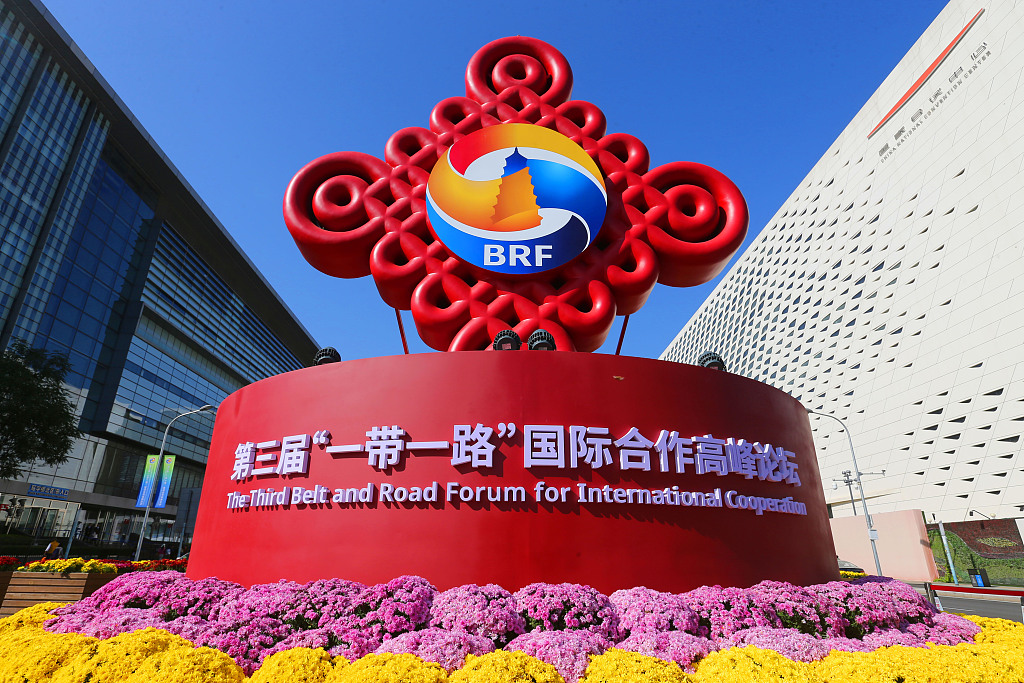
Decorative flowerbeds and installations are set up to greet visitors to the third Belt and Road Forum for International Cooperation in Beijing on October 16, 2023. /CFP
Decorative flowerbeds and installations are set up to greet visitors to the third Belt and Road Forum for International Cooperation in Beijing on October 16, 2023. /CFP
Cultural exchange and mutual learning have always been key topics at the Belt and Road Forum for International Cooperation. President Xi said in his opening remarks at the first Belt and Road Forum for International Cooperation held on May 14, 2017 that "2,000 years ago, our ancestors, trekking across the vast steppes and deserts, opened the transcontinental passage connecting Asia, Europe, and Africa, known today as the Silk Road. Our ancestors, navigating rough seas, created sea routes linking the East with the West – namely, the Maritime Silk Road. These ancient silk routes opened windows of friendly engagement among nations, adding a splendid chapter to the history of human progress."
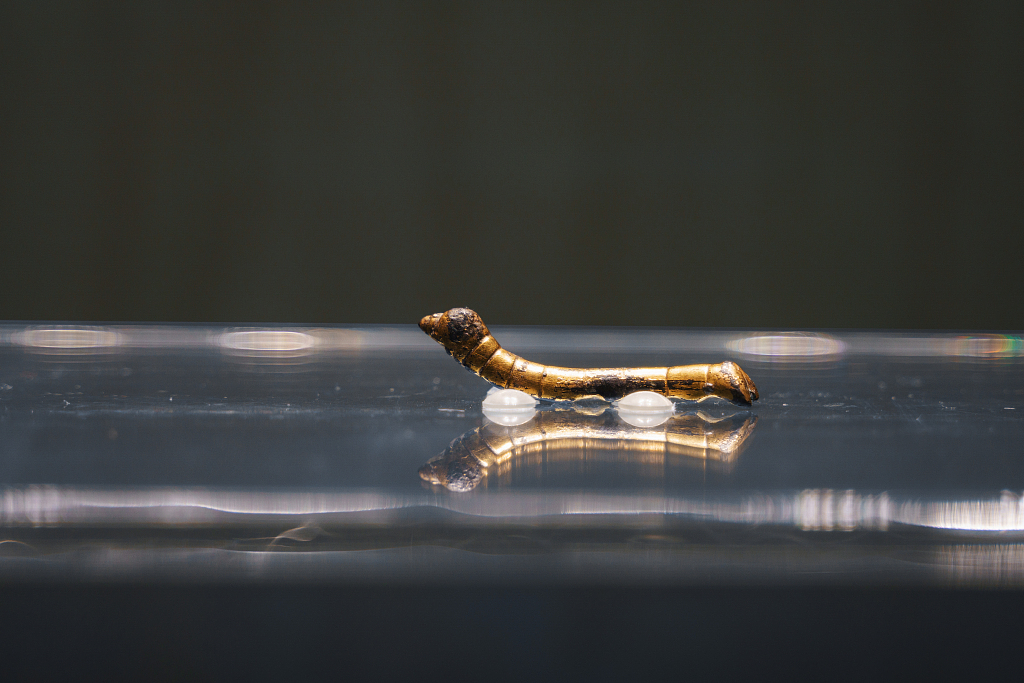
The thousand-year-old "gilt bronze silkworm" displayed at China's Shaanxi History Museum is a piece of historical evidence that indicates silkworm breeding techniques from China spread to other parts of the world. /CFP
The thousand-year-old "gilt bronze silkworm" displayed at China's Shaanxi History Museum is a piece of historical evidence that indicates silkworm breeding techniques from China spread to other parts of the world. /CFP
During China's Han Dynasty (206 BC-220 AD), Zhang Qian, a royal emissary, left Chang'an, the capital of the Han Dynasty, and traveled westwards on a mission of peace to open up an overland route linking the East with the West. It was later known as Zhang Qian's journey to the Western Regions and this daring expedition is still remembered today.
Echoed by many travelers in later generations, like Marco Polo from Italy and Zheng He, the famous Chinese navigator from the Ming Dynasty (1368-1644), these pioneers won their place in history not as conquerors with warships, guns and swords. But rather, they are remembered as friendly emissaries leading camel caravans and sailing treasure-loaded ships. Over generation after generation, the silk route travelers continued to build a bridge for peace and East-West cooperation.
President Xi added at the first Belt and Road Forum for International Cooperation that the ancient silk routes were not just for trade alone, but they also served to boost the flow of knowledge.
"Through these routes, Chinese silk, porcelain, lacquer work and ironware were shipped to the West, while pepper, flax, spices, grape and pomegranate entered China. Through these routes, Buddhism, Islam and Arab astronomy, calendar and medicine found their way to China, while China's four great inventions and silkworm breeding spread to other parts of the world. More importantly, the exchange of goods and know-how spurred new ideas. For example, Buddhism originated in India, blossomed in China and was enriched in Southeast Asia. Confucianism, which was born in China, gained appreciation by European thinkers such as Leibniz and Voltaire. Herein lies the appeal of mutual learning," said President Xi.
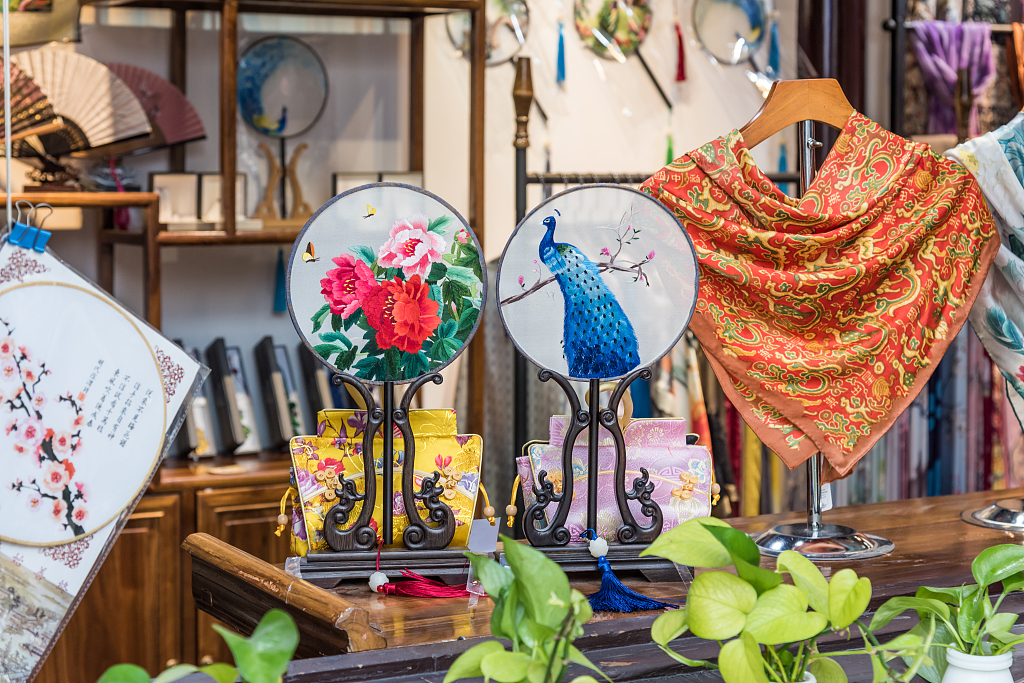
A file photo shows a range of silk products. /CFP
A file photo shows a range of silk products. /CFP
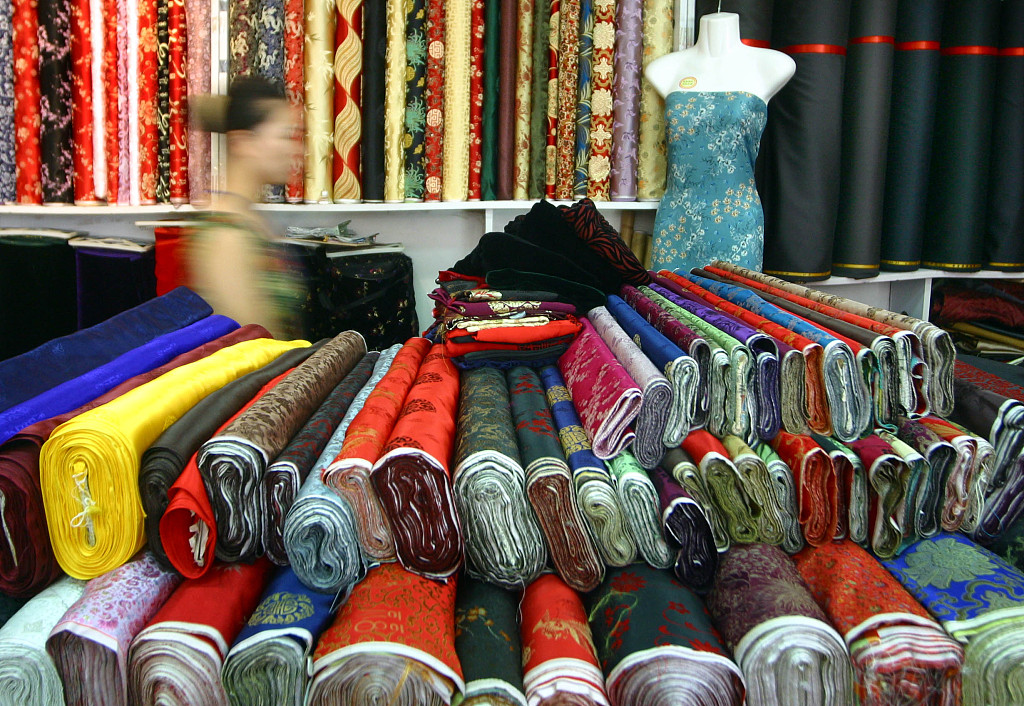
A file photo shows rolls of silk textiles stacked in a fabric store. /CFP
A file photo shows rolls of silk textiles stacked in a fabric store. /CFP
According to China's State Administration of Cultural Heritage, during the Qin and Han dynasties (221 BC-220 AD), Chinese-made silk traveled from today's Xinjiang Uygur Autonomous Region in northwest China through Central Asia to Europe. At that time, Europeans referred to China as "Seres," which means the "Land of Silk." The frequency of the term "Seres" in Western literature notably increased after Zhang Qian's exploration of the Western Regions. Silk textiles transported westwards were the highlight of the trade route, with other economic activities and exchanges adding to the scene.

An ancient mirror recovered from the wreck of the "Black Rock," a ship that sank during the Tang Dynasty (618-907), is exhibited at the Shanghai Museum on September 16, 2023. /IC
An ancient mirror recovered from the wreck of the "Black Rock," a ship that sank during the Tang Dynasty (618-907), is exhibited at the Shanghai Museum on September 16, 2023. /IC

Treasures recovered from the wreck of the "Black Rock," a ship that sank during the Tang Dynasty (618-907), are exhibited at the Shanghai Museum on September 16, 2023. /IC
Treasures recovered from the wreck of the "Black Rock," a ship that sank during the Tang Dynasty (618-907), are exhibited at the Shanghai Museum on September 16, 2023. /IC
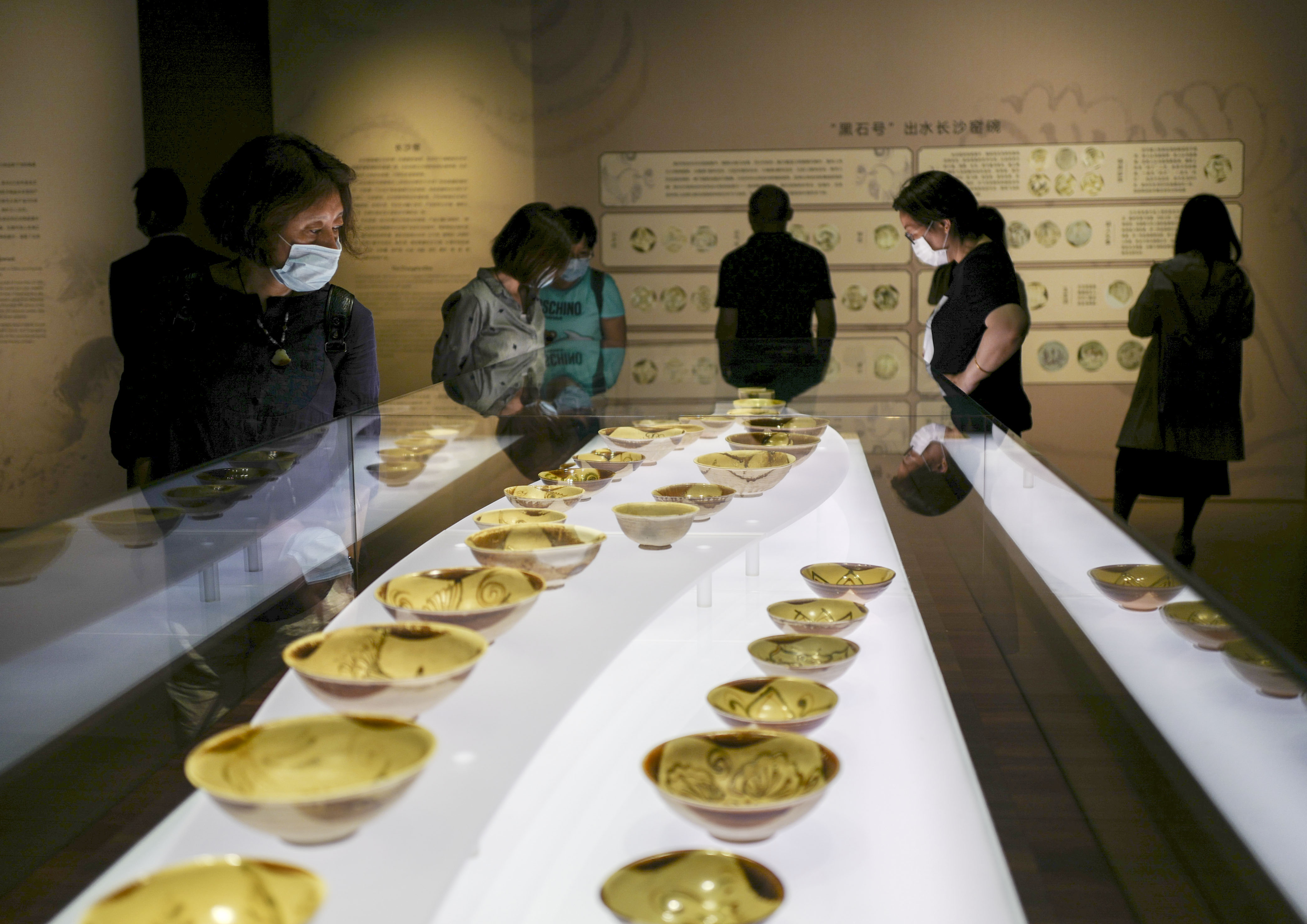
Treasures recovered from the wreck of the "Black Rock," a ship that sank during the Tang Dynasty (618-907), are exhibited at the Shanghai Museum on September 16, 2023. /IC
Treasures recovered from the wreck of the "Black Rock," a ship that sank during the Tang Dynasty (618-907), are exhibited at the Shanghai Museum on September 16, 2023. /IC
From the late Tang Dynasty to the Song and Yuan dynasties (618-1368), the Maritime Silk Road continued to flourish. The primary commodity was silk, however, by the Song and Yuan periods, porcelain gradually became the main export product.
Since the Song Dynasty (960-1279), China's porcelain export products were represented by those made at the kilns of Longquan, Jingdezhen and Zhangzhou, with trade extending to the Arab regions and the Indian subcontinent.
In the 17th to 18th centuries, Chinese porcelain was not only a precious everyday item in Europe but also regarded as a fashionable art treasure. Jiangxi's Jingdezhen, Fujian's Dehua, and Guangdong's Shiwan were all prominent production centers for Chinese porcelain. As many as 150,000 items of Chinese porcelain were exported to the then Batavian Republic annually at this time. Porcelain exported from China during the Qing Dynasty (1644-1911) also held a significant share of the European market.

A file photo shows ceramics drying in the sun ahead of being fired in a kiln at Jingdezhen, Jiangxi Province. /CFP
A file photo shows ceramics drying in the sun ahead of being fired in a kiln at Jingdezhen, Jiangxi Province. /CFP
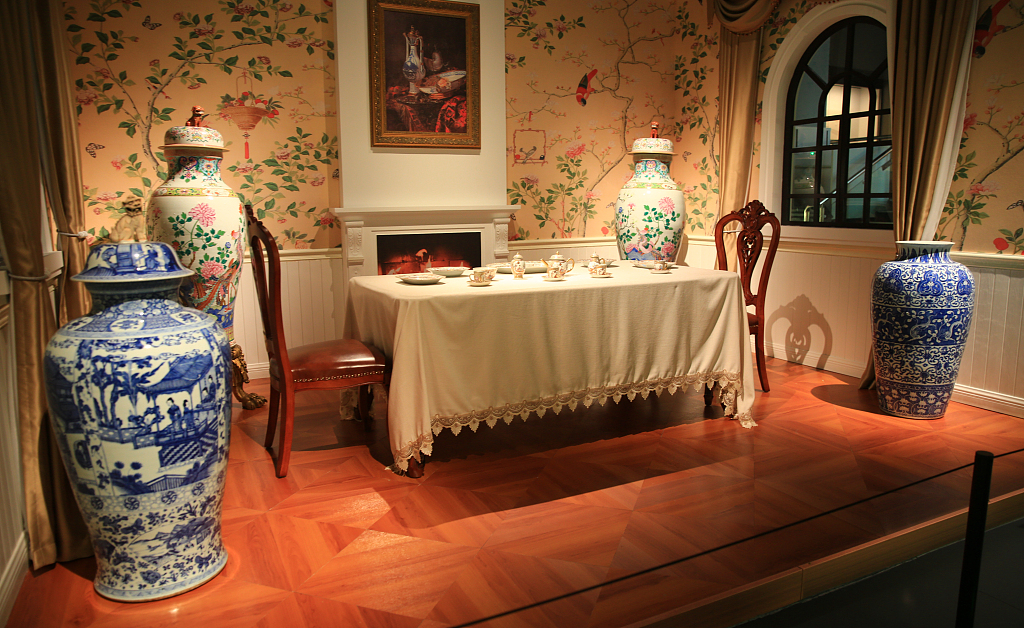
Chinese porcelain items are displayed at the Shimao Maritime Silk Road Museum on October 5, 2023, in Quanzhou, Fujian Province. This exhibit shows how Chinese porcelain was used to decorate Western living rooms in the past. /CFP
Chinese porcelain items are displayed at the Shimao Maritime Silk Road Museum on October 5, 2023, in Quanzhou, Fujian Province. This exhibit shows how Chinese porcelain was used to decorate Western living rooms in the past. /CFP
The trade mutually brought a wide variety of spices to China. Various spices from South Asia, Central Asia, Africa and Europe were sold along the trade routes. Originally from India, pepper was introduced to China via Persia through the silk routes. In ancient China, pepper was an essential seasoning for the upper classes. During the Tang Dynasty, pepper was a more expensive commodity, and the quantity of pepper a person possessed became a symbol of their wealth.

This elaborate gilded silver salt tray is used to store salt and pepper for tea drinkers during the Tang Dynasty. It was unearthed from the Tang Pagoda Underground Palace, located in Fufeng County, Shaanxi Province, a historical site associated with the Famen Temple. The artifact serves as proof that people in the Tang Dynasty liked to add spices to tea. /CFP
This elaborate gilded silver salt tray is used to store salt and pepper for tea drinkers during the Tang Dynasty. It was unearthed from the Tang Pagoda Underground Palace, located in Fufeng County, Shaanxi Province, a historical site associated with the Famen Temple. The artifact serves as proof that people in the Tang Dynasty liked to add spices to tea. /CFP
Cultural exchanges along the Silk Road were mutually beneficial to all participants. China's "Four Great Inventions" – papermaking, printing, gunpowder and the compass – were introduced to the wider world via the Silk Road. Among these, papermaking was the first to circulate widely. By the end of the 3rd century, papermaking had already reached places like Korea and Japan. In the 13th century, Arabic astronomy, calendrical systems and medicine were all introduced to China. During the Han and Tang dynasties, Buddhism traveled along the Silk Road to China and had significant influence on Chinese culture. Buddhism was later localized and developed into a distinct part of Chinese religious and cultural life.
As President Xi Jinping said at the first Belt and Road Forum for International Cooperation, "We should build the Belt and Road into a road connecting different civilizations," stressing that "historical and cultural heritage should be fully tapped to jointly develop tourist products and protect heritage in ways that preserve the distinctive features of the Silk Road."
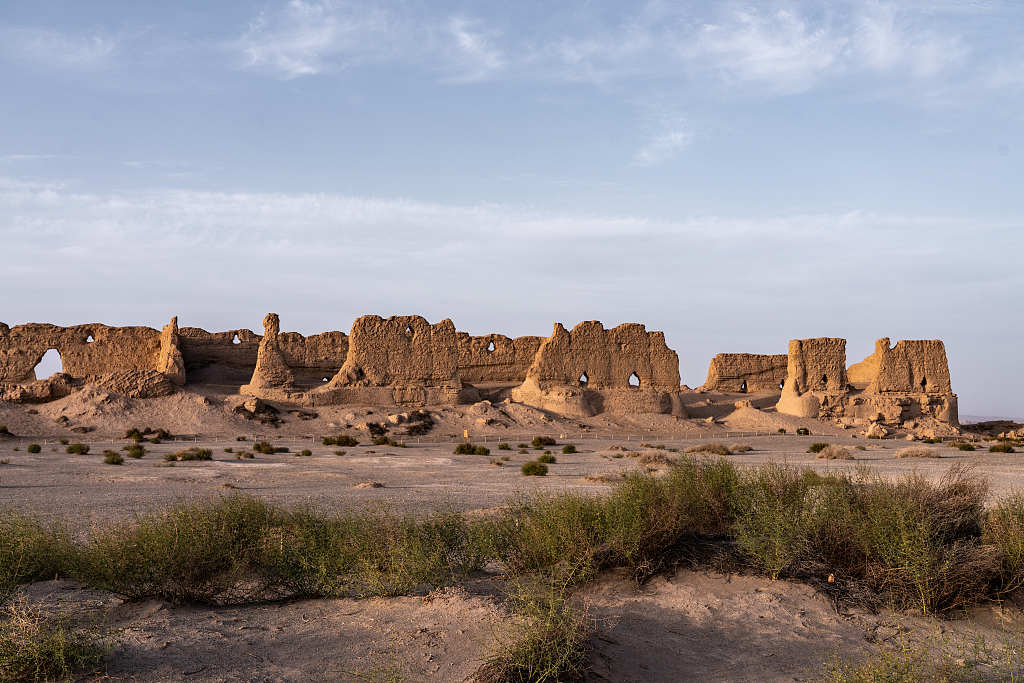
The Yumen Pass, also known as Yumenguan or Jade Gate Pass, is located 80 kilometers northwest of Dunhuang, Gansu Province. As a strategic fort situated on the ancient Silk Road, the importance of this mountain pass can be traced back to the early Han Dynasty where it acted as a vital conduit for controlling trade and transit between Central Asia and the Han Empire. /CFP
The Yumen Pass, also known as Yumenguan or Jade Gate Pass, is located 80 kilometers northwest of Dunhuang, Gansu Province. As a strategic fort situated on the ancient Silk Road, the importance of this mountain pass can be traced back to the early Han Dynasty where it acted as a vital conduit for controlling trade and transit between Central Asia and the Han Empire. /CFP
In 2014, the project "Silk Roads: the Routes Network of Chang'an-Tianshan Corridor" was listed as a UNESCO World Heritage Site to reflect the important role that the ancient Silk Road has played in promoting exchanges among different civilizations. This was a result of the joint efforts made by China, Kazakhstan and Kyrgyzstan in protecting a 5,000-kilometer-long section of the Silk Road network, stretching from Chang'an/Luoyang – the central capital of China during the Han and Tang dynasties – to the Zhetysu region of Central Asia.
Thirty-three sites along this extensive corridor encompassed capital cities and palace complexes of various empires and Khan Kingdoms, trading settlements, Buddhist cave temples, ancient paths, posthouses, passes, beacon towers, sections of the Great Wall, fortifications, tombs, and religious buildings. This marked China's first joint application for World Heritage status, and it was the first time the heritage of Silk Road has been included in UNESCO's World Heritage List.
With 2023 marking the tenth anniversary of the Belt and Road Initiative, museums and art galleries have become essential cultural envoys under the proposal, serving as vital platforms for preserving and promoting cultural exchange. The exhibition "Self-Portrait Masterpieces from the Uffizi Galleries Collections" hosted by the National Museum of China has had a widespread impact. Since its opening in April 2023, it has proved extremely popular, attracting visitors from all over the country.
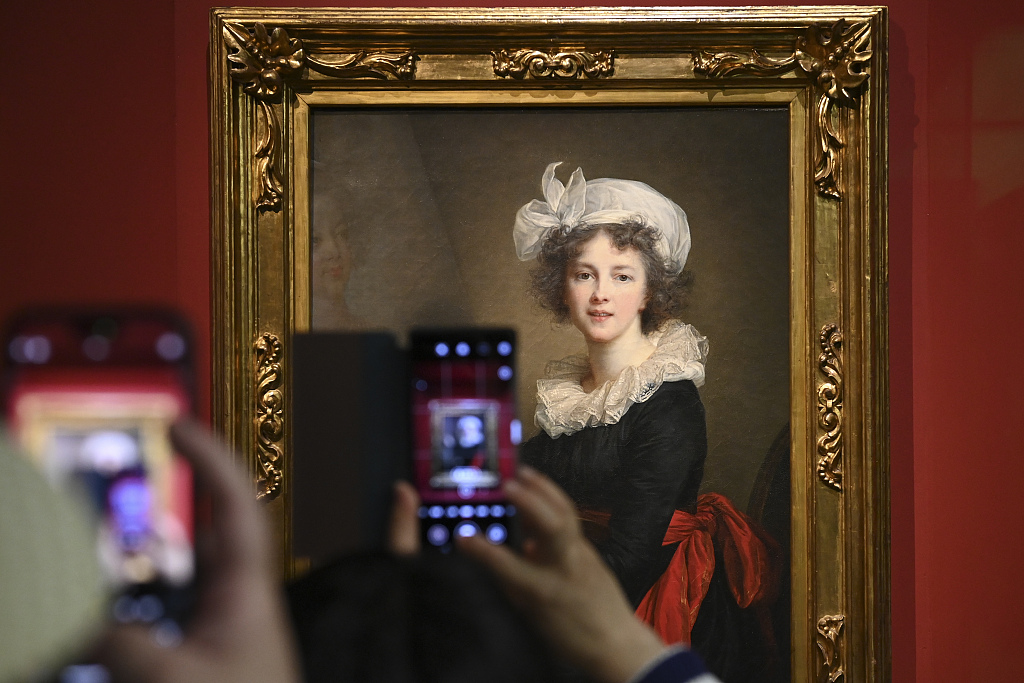
A self-portrait masterpiece from the Uffizi Galleries collection is on display at the National Museum of China in Beijing on April 27, 2023. /CFP
A self-portrait masterpiece from the Uffizi Galleries collection is on display at the National Museum of China in Beijing on April 27, 2023. /CFP
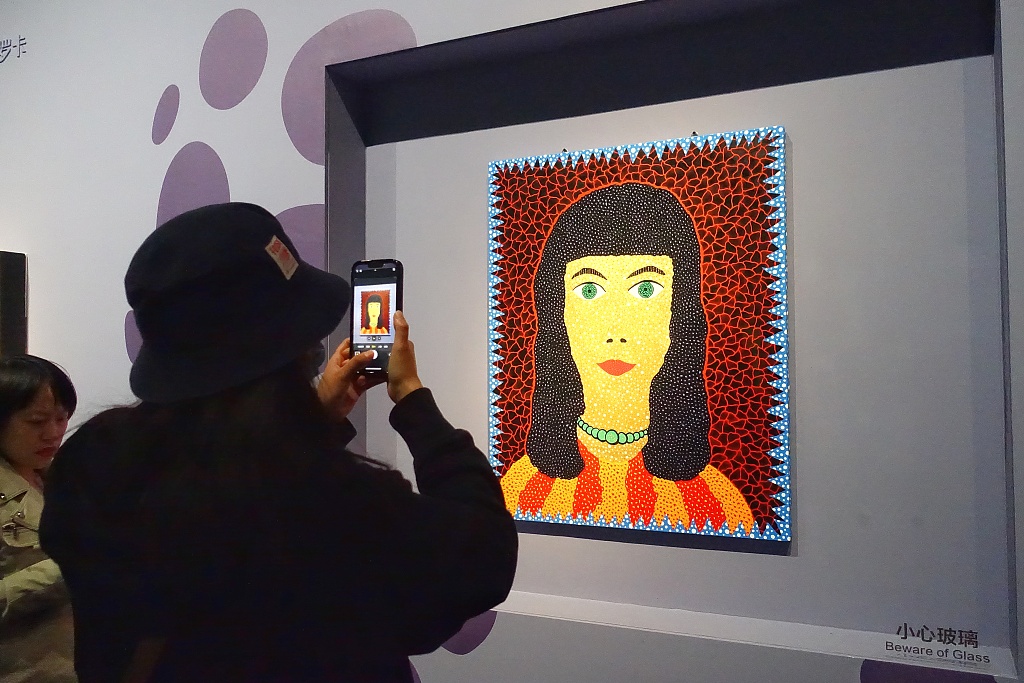
A self-portrait masterpiece from the Uffizi Galleries collection is on display at the National Museum of China in Beijing on April 27, 2023. /CFP
A self-portrait masterpiece from the Uffizi Galleries collection is on display at the National Museum of China in Beijing on April 27, 2023. /CFP
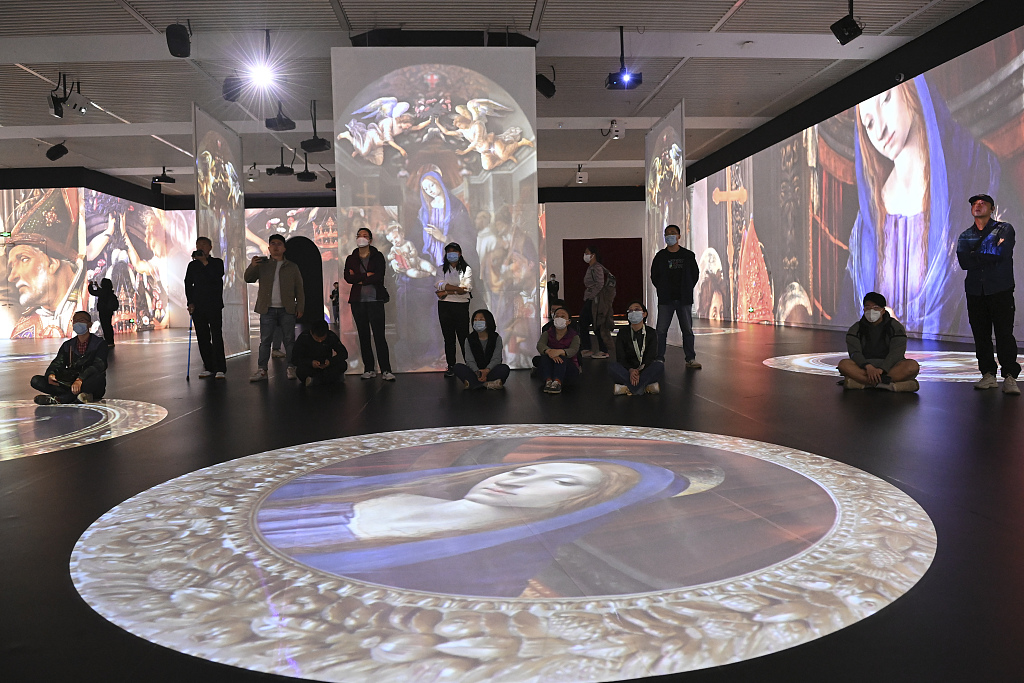
Visitors enjoy an immersive experience that allows them to take a closer look at Renaissance masterpieces from the Uffizi Galleries collection at the National Museum of China in Beijing, April 27, 2023. /CFP
Visitors enjoy an immersive experience that allows them to take a closer look at Renaissance masterpieces from the Uffizi Galleries collection at the National Museum of China in Beijing, April 27, 2023. /CFP
Since September 2023, China National Silk Museum, in collaboration with the Queen Sirikit Museum of Textiles in Thailand, the Samarkand State Museum-Reserve, and the State Museum of Arts of Uzbekistan inaugurated the first exhibition focusing on the costumes of Asian countries. The exhibition further enhances the audience's understanding of the exquisite, diverse, and interwoven art and culture of Asian countries.
On September 4, on the sidelines of China's International Fair for Trade in Services, a high-level tourism forum for Belt and Road Initiative partner countries, took place in Beijing. Participants from Singapore, Indonesia, New Zealand, Russia, Pakistan, and Thailand gathered to discuss international cooperation in the cultural tourism industry and to forge new plans for the high-quality development of the Belt and Road Initiative.